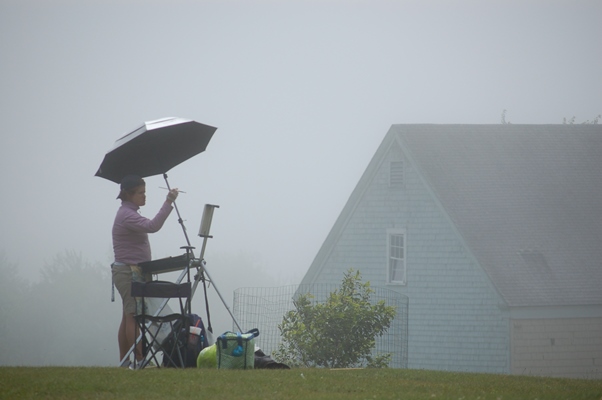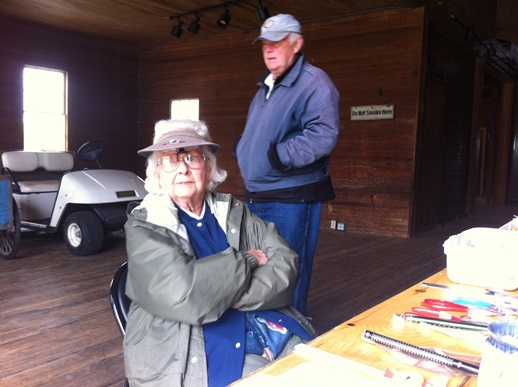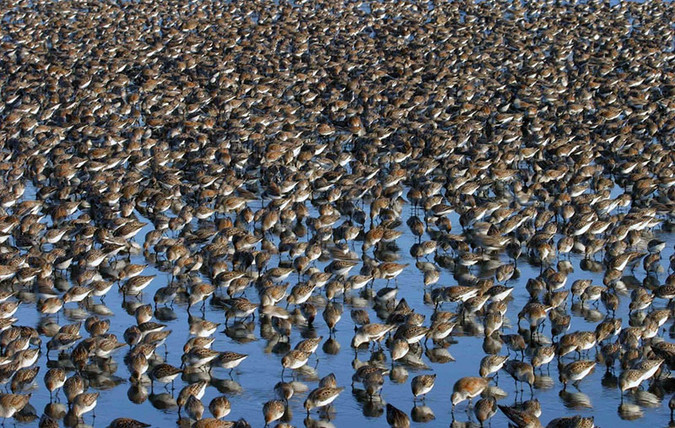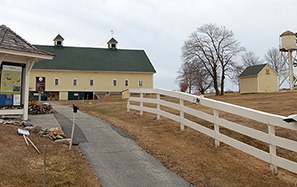The Wrack
The Wrack is the Wells Reserve blog, our collective logbook on the web.
The Wrack is the Wells Reserve blog, our collective logbook on the web.
Katrina Papanastassiou brought good news for her lunchtime talk about this summer's piping plover and least tern nesting season in Maine.
Not often you see a dude rounding a hedgerow, coming down the trail at a lilting half-run, tripod hanging off one hand, but that's exactly what I saw last Tuesday. It was Josh Fecteau on the chase. He had news I hadn't heard. Wilson's Phalarope. In the marsh. From the dike.
Yesterday, a foggy morning in Southern Maine made for some interesting perspectives.

It's another winged Wednesday, but while bird banders await more birds, other wonders abound at this "place to discover."

One April long ago, my ornithology instructor took our class to Bowerman Basin to view an annual sandpiper spectacle he helped discover and document. Dr. Herman delivered us to an enormous flock of shorebirds and, as science students "seeking patterns in nature," charged us with tallying them.

"How do we count such a huge flock of birds?" we asked the sage.
"Count the legs and divide by two," was his wisdom.*
Ever since, I've strived to get good looks at bird legs whenever I've got binoculars in hand. No, I'm not counting them; I'm checking them for bands. Steve also taught us the value of studying birds as individuals and as populations — and how both approaches are aided by a scientist's ability to identify specific birds reliably. To do that requires marking them and legs are the go-to appendage.
 My tight-timeframe Wednesday birding routine started in March and carried on through December. Over that span I missed 7 mid-week morning appointments with the birds, but still completed 33 checklists accounting for 61 species.
My tight-timeframe Wednesday birding routine started in March and carried on through December. Over that span I missed 7 mid-week morning appointments with the birds, but still completed 33 checklists accounting for 61 species.
Starlings were evident on 20 surveys, crows turned up on 19, and a handful of species appeared 11 times: robin, bluebird, a sparrow, and goldfinch.
A scissor-tailed flycatcher spends a few hours along the Muskie Trail.
Mornings, driving in, Laudholm welcomes me. I loop in to park, take two bags in one hand and binoculars in the other, step out, push the car door shut, and lock it. Already I'm attuned, scanning, panning the landscape, listening for caws and chips.
 Most days I'm rewarded. It's a long walk from the parking lot to the farmhouse door and the reserve is famously rich in bird life. With its grassy expanses, ancient hedgerows, mixed woodlands, and the estuaries just beyond them, it's a rare day when no bird moves or speaks during the pedestrian part of my commute.
Most days I'm rewarded. It's a long walk from the parking lot to the farmhouse door and the reserve is famously rich in bird life. With its grassy expanses, ancient hedgerows, mixed woodlands, and the estuaries just beyond them, it's a rare day when no bird moves or speaks during the pedestrian part of my commute.
Four weeks ago, I added a twist to my routine. Every Wednesday, I'd measure my walk — both length and time — while logging each avian encounter. Then I'd submit my checklist to eBird, where it can be stored and shared.